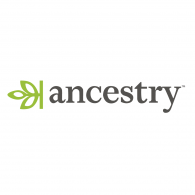Ancestry add England & Wales 1939 Register
The Register can be searched here
Original Source: 1939 Register (RG101 Series) The National Archives, Kew, London
Historical Context
Initially taken due to the onset of war with the purpose of producing National Identity Cards, the register later came to be multi-functional, first as an aid in the use of ration books and later helping officials record the movement of the civilian population over the following decades and from 1948, as the basis for the National Health Service Register. The 1939 Register is an extremely important genealogical resource, not only for the rich detail and information recorded for each person and household, but also in helping to bridge a thirty-year gap in census data. The census taken in 1931 was destroyed during the Second World War and no census was carried out in 1941 due to the ongoing conflict. The register, as held by The National Archives, contains data only for England and Wales and does not include records from households in Scotland, Northern Ireland, the Channel Islands or the Isle of Man.
Organisation of the Registers
Enumerators collected the data on 29th September 1939. Volumes were organised by place (District or County – see codes below) and then by Enumeration District, represented by a four or five letter code followed by two numbers. These codes were largely based on the 1931 census enumeration units.
Letter Codes for Boroughs and Districts:
- RD – Rural District
- UD – Urban District
- MB – Municipal Borough
- CB – County Borough
- Met B – Metropolitan Borough
What can I find in these records?
You may be able to find the following information (where available):
- Name
- Gender
- Address
- Date of Birth
- Marital Status
- Occupation
- Whether Visitor, Officer, Servant, Patient or Inmate
- Inferred family members
- Other members of the household
Sometimes, you may see extra information on the right-hand side of the image, such as whether an individual had volunteered as an air raid warden. Some records include names crossed out with another name written in an annotation above or at the side, signifying the tracking of the population over time with the addition of women’s married names and other name changes over the years.
Redactions
Images have been redacted to protect the privacy of those still alive and we will be annually adding records for those with birth dates older than 100 years or if a record of the death has been reported to The National Archives. Images will also be updated to reflect the opening of the record. All indexes have been created from redacted images as provided by The National Archives and as such, some indexes may not include all information as originally recorded, where it is obscured from view.
